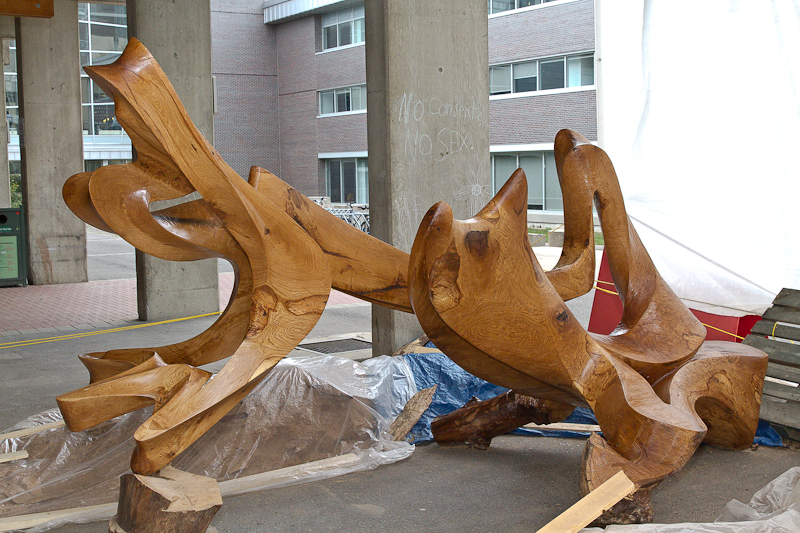
As thousands of Carleton students commuted between classes, sculptor David Fels could be seen working on a piece of art outside the Architecture Building.
The sculpture is titled “Inclusivity” and is carved out of a 300-year-old oak tree.
Fels said he has been working on the sculpture in full public view all summer, and has recently placed the finishing touches on his masterpiece.
“Inclusivity” will be moved to the Ottawa Convention Centre this month for display at the International Summit on Accessibility, organized by Carleton and scheduled July 12-15, 2014.
The sculpture explores the concept of free form art, Fels said.
“Each form is growing from the same tree, yet they’re all distinctly unique from one another,” he said. “All together inclusively, they reach higher and further.”
Fels said he began his project with that concept in mind, then made a drawing based on those ideas.
“I found this gnarly tree with all these branches, then I started carving out what I had in mind,” he said. “The drawings changed because the tree wouldn’t want to do the forms I wanted, so the sculpture constantly changed back and forth before it reached its final shape.”
Fels said he only sculpts trees that have died or been cut down.
His artistic creations are no stranger to Carleton.
Another one of his sculptures, “Sailing Through Time,” carved out of the same 300-year-old oak tree as “Inclusivity,” is currently on display in the River Building.
Another creation of his can be seen on the library’s second floor.
“I love working at Carleton because the age group here is still looking up and out, and there’s a lot of good energy all around,” he said.
Fels said he studied math and physics in university before transferring to art, attending the Nova Scotia College of Art and Design, and continuing studies in Europe before returning to Canada.
He said he practices other mediums of art such as painting and drawing, and working on mathematics during his spare time.
However, sculpting and carving wood has been constant throughout his career, he said.
“Wood is interesting and forces me to go further with my mind rather than just drawing on paper,” he said.
“A tree has a living history. When I carve it I begin to feel that history and I start to form a dialogue and understand what its growth spirit is, and then I work with that,” he said.
Fels said although the sculpture will come back to Carleton, where the sculpture will permanently reside has not yet been decided.





